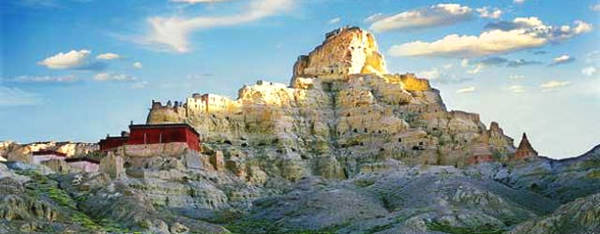Chongzipipo Site of Ancient Mining and Metallurgy in Gejiu City, Honghe
Overview
The Chongzipipo Site of Ancient Mining and Metallurgy (个旧市冲子皮坡古冶炼遗址) is located 45 kilometers south of Gejiu City (个旧市), between the villages of Douyan (陡岩村) and Xiaojingkou (小箐口). This significant historical site dates back to the Han Dynasty (汉代) and represents an important industrial archaeological site.
Discovery and Excavation
In May 1993, a scientific excavation began at this ancient smelting site, which spans nearly 10,000 square meters. Two furnaces and a charcoal kiln from the Han Dynasty were uncovered, along with artifacts such as tin ingots, silver ornaments, Han Wuzhu coins (汉五铢), primitive glazed pottery jars, and a large quantity of copper and tin slag. The site’s findings corroborate historical records, such as the “Book of Han” (《前汉书》), which details the extraction of tin and silver in the region.
Historical Context
The discovery was serendipitous. On March 14, 1993, during a local market day, party secretary Fan Xiuying (范秀英) informed cultural officials about artifacts found while villagers were mining for lead ore. Upon visiting the site, officials noted the artifacts unearthed included coins, pottery, and a basin. Deputy Mayor Liu Xingming (刘星明) ordered the excavation to halt for a thorough government investigation.
Artifacts Found
During the excavation, various artifacts were classified into categories based on material:
- Pottery:
- One intact pottery jar (泥质陶罐) with decorative impressions.
- Types included sand-tempered pottery (夹砂陶) and earthenware.
- Original Porcelain:
- Two pieces with similar designs, including a broad mouth and a blue glaze.
- Metal Artifacts:
- Coins: Two Han Wuzhu coins (汉五铢).
- Bronze Tools: Including an axe and a basin.
- Iron Tools: A rusted fragment.
- Lead Artifacts: Two pieces, one complete lead ingot (铅锭) weighing 4130 grams.
- Silver Artifacts: Three items, including one silver bracelet and two rings.
Summary of Artifacts
- Pottery: 1 jar, various fragments.
- Porcelain: 2 pieces.
- Metal:
- Coins: 2 Han Wuzhu coins.
- Bronze: 1 axe, 1 basin.
- Iron: 1 fragment.
- Lead: 2 pieces (1 complete ingot).
- Silver: 3 pieces (1 bracelet, 2 rings).
Research Findings
Excavation indicated that the smelting process took place in a furnace situated in a sloped design, allowing molten metal to flow out easily. The site also shows features like vent holes, suggesting efficient use of natural wind for airflow.
Dating the Site
While some artifacts date back to the Han Dynasty, radiocarbon dating of charcoal from the site suggests a later period, around the Ming Dynasty (明代) to Qing Dynasty (清代), potentially indicating a historical misalignment in the understanding of the site’s operational timeline.
Significance
The Chongzipipo site is crucial for studying ancient metallurgy and mining practices in China. The large amount of slag found at the site indicates a significant scale of metal processing, suggesting a well-established industry that may have served broader economic and political needs, possibly tied to historical figures like Wu Sangui (吴三桂).
How to Get There
The Chongzipipo site is accessible from Gejiu City. Visitors can take local transportation or self-drive south towards the villages of Douyan and Xiaojingkou. The site is approximately 45 kilometers from the city center.
Travel Tips
- Best Time to Visit: The site can be visited year-round, but spring and autumn offer pleasant weather.
- Local Guidance: It’s advisable to engage local guides for a more enriching experience.
- Photography: The landscape around the site is picturesque; bring a camera for great photo opportunities.
- Respect the Site: As a historical site, it’s essential to respect the area, avoiding damage to artifacts and surrounding nature.















